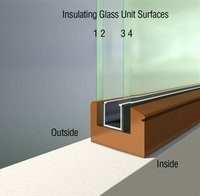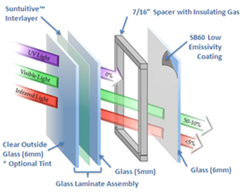How Glass is Made

We look through glass every day, but rarely think about where it comes from. Today, we’d like to share a little info about how glass is made.
While it’s easy to guess that glass is produced at a glass manufacturing plant, it’s probably not as easy to guess what raw materials are used. Surprisingly, glass is made from a simple combination of sand, soda ash, limestone, and dolomite.
It all starts at what is called the batch house, where the raw materials are loaded into individual storage silos. The batching process begins when the materials are moved via a conveyer belt to the melting furnace.
At the melting furnace, the batch materials are mixed with cullet (scrap glass) and melted at a very high temperature (over 2,000° F). Once melted, the now liquid glass moves on to the fining process, where bubbles that were formed during the melting process are allowed to escape. From here, the molten glass moves on to the float bath, where it begins to harden on a bath of liquid tin. At this time, the thickness and width of the glass are adjusted, before it moves on to a series of cooling stages.
Once the glass reaches a cool temperature of about 1,100 degrees, it moves on to the annealing lehr, where it continues to be cooled at a controlled rate to put the proper stresses in it for cutting. The glass leaves the lehr at about 350 degrees and is then further cooled by fans until it reaches room temperature.
Finally, the glass is inspected for flaws prior to cutting and shipping.
Our friends at PPG produced a video to show the glass making process. Here’s part one and part two.
Interesting stuff! Leave us a comment if you have a question.




